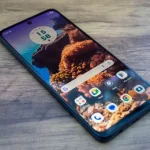To effectively convey info between people on land and underwater vehicles, there are two popular strategies. One solution we are using is to attach cables onto the vehicle and transfer data. This method is used by most deep sea ROVs where people on the surface operate drones in a depth of more than 1000 meters.
Low Frequency Radio
A more technological advanced solution is to use low frequency radio wave instead of high. Low frequency radio waves has a longer wavelength than high frequency radio waves and they can travel further in water because they require less energy to pass through conductors than high frequency waves. With Low frequency radio wave technology, people on land can communicate with underwater vehicles hundreds of feet under the ocean without the need of a cable. However, Low frequency radio wave technology is very expensive and bulky. The antenna and internal hardware that transmits low frequency radio wave can be extremely large. Above all, the low frequency transmission has low bandwidth, meaning only a minimum amount of data can be transferred at a time. Thus, it would be almost impossible to stream videos using low frequency radio waves.
Our Solution
Navatics MITO incorporates both methods of land-to-water communication techniques. MITO is directly tethered to a communication buoy with a durable waterproof cable that. The remote control can output instructions to the communication buoy by using 2.4G Radio Frequency, and the communication buoy will then transmit the acquired information to MITO through the tether. MITO will relay video footage back to the buoy and the buoy will broadcast the live video feed to user’s mobile device. With this design, MITO can be operated from a long distance from the controller without the use of a very long cable or very expensive low frequency radio wave technology.



